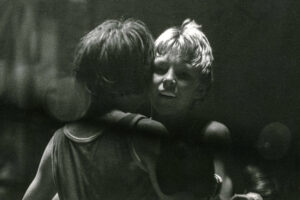What’s the connection between town planning and photography? Not a lot you might think, but in one case of a relationship has emerged, albeit a secondary one.
I recently had a Zoom meeting with two researchers, Alina Khakoo and Lucy Howie, who are looking at the origins and significance of the Cambridge Darkroom and its relationship with the local community. In wide-ranging discussion we looked at the roots of the Darkroom in the St Matthew’s Photo Workshop and I suggested that this could be linked to the St Matthew’s District Plan adopted by Cambridge City Council in 1977.
St Matthews is an area of mainly terraced housing dating from the latter part of the 19th Century. By the 1950s and 60s it had come to be regarded as one of the most deprived parts of the City, fit only for clearance and redevelopment. Attitudes changed in the 1970s and the area was seen as suitable for regeneration and renewal of the existing housing stock. Work on the District Plan started in 1975. The Plan included a package of proposals designed to ensure the future of the area, including: declaration of a General Improvement Area (which released house and environmental improvement grants); cutting out through traffic; relocating non-conforming commercial businesses; and protecting local services and amenities. The result was investment in the area, a new sense of ownership and optimism and the influx of a younger population as houses came onto the market.
Enter the St Matthews Photo Workshop. I can do no better than quote from Roy Hammans’ Golden Fleece web site (https://the-golden-fleece.co.uk).
In October 1978 six people with a passion for photography met in the Dewdrop Inn Public House, Gwydir Street, Cambridge to form the St Matthews Photo Workshop. The Workshop group published four aims:
- to make a photographic record of the people and buildings of the St Matthews area [an undeveloped Victorian inner-city part of Cambridge, UK]
- to explore the particular social and environmental qualities of the area through photography
- to make people in Cambridge more aware of the qualities of the area through photography; and
- to find and record old photographs of the area.
The Workshop members proposed to exhibit their photographs and hoped ‘to extend activities to include the teaching of young people about photography.’
The group grew to around twenty members and many were active in a range of local community activities.
The Golden Fleece site goes on to describe the transition to the Cambridge Darkroom.
So, in this case, if no other, I can see a line drawn between photography and town planning.


